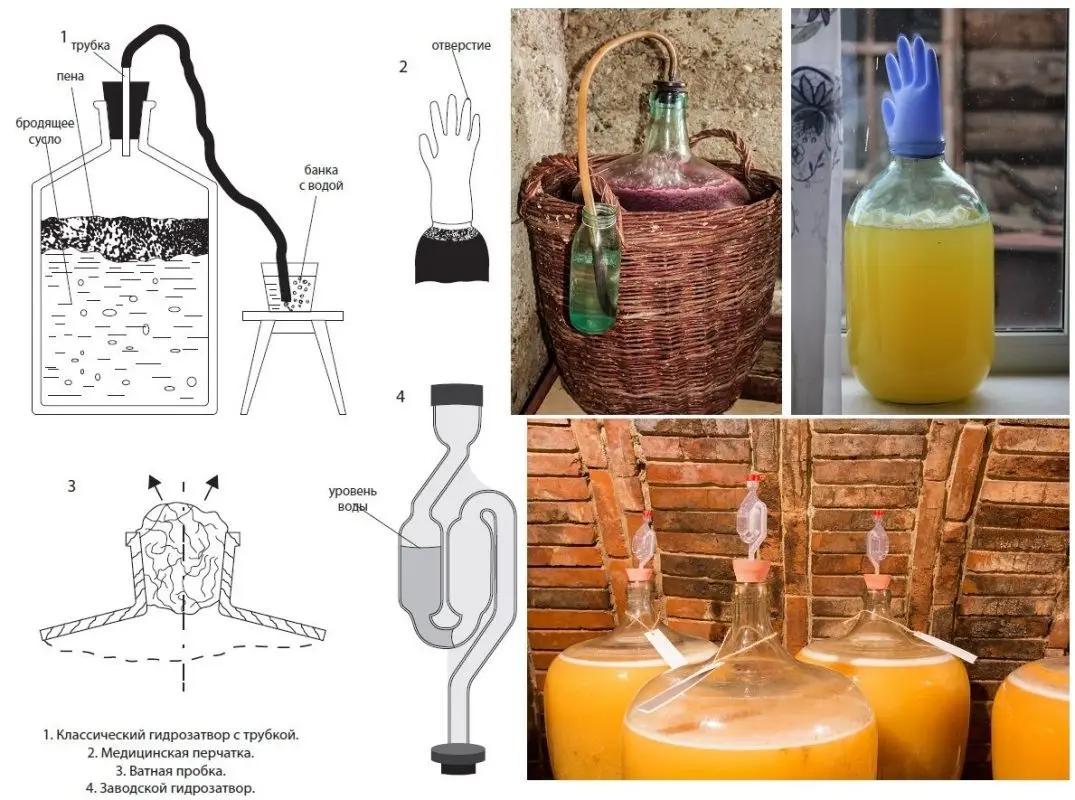Dogwood moonshine has a characteristic aroma of berries and a soft rich taste with hints of astringency. The problem is that not every even an experienced moonshiner is able to put the mash correctly – the raw materials are capricious and require the obligatory observance of several stages of preparation: adding sugar, diluting the juice, removing seeds and filtering the mash that has won back.
Theory
Ripe cornel berries have a sugar content of 7-9%. This means that with 1 kg of raw materials you can get a maximum of 80-90 ml of moonshine with a strength of 40%. Due to the high acidity and a small amount of juice, the mash needs to be diluted with water, which further reduces the sugar content, and this, in turn, leads to a drop in the fermentation intensity, as a result, the mash can turn sour.
Adding sugar to dogwood mash is a must. The optimal proportion is 3:1 (for 3 kg of berries add 1 kg of sugar). Each kilogram of sugar will increase the yield of moonshine by 1,1-1,2 liters (40% vol), but if you add too much, the dogwood aroma and taste will be weak.
Water will make the mash liquid and reduce acidity. For 1 kg of dogwood, 1 liter of water is required, plus another 4 liters for every kilogram of sugar.
It is best to put dogwood mash on wine yeast for red juice, raisin sourdough or wild yeast, which are on the surface of unwashed berries, will also work. The disadvantage of all these strains is a long fermentation time – up to 50 days. Braga will play much faster on alcohol or baker’s yeast – in about 5-10 days, but characteristic alcohol notes will appear that will interrupt dogwood. If there is enough time, it is better to use wine or wild yeast.
Ingredients:
- dogwood berries – 3 kg;
- sugar – 1 kg;
- water – 10 l;
- yeast – wine per 15 liters of must, or bakery 20 g dry (100 g pressed).
dogwood mash recipe
1. If wild yeast is used, do not wash the berries. Squeeze out the bones. A lot of pulp is separated along with the bones. In order not to throw away valuable raw materials, the bones must be carefully, without crushing, rubbed through a sieve, extracting as much pulp as possible.
Removing the seeds is a long and laborious process, but mandatory, otherwise an unpleasant almond-chemical aftertaste will appear in the moonshine.
2. Fold the dogwood pulp and peel into a fermentation container. Add sugar and pour in water. Stir until the sugar is completely dissolved. The container must have at least 20% free space for foam and carbon dioxide.
3. Add yeast or raisin starter pre-activated according to the instructions on the bag into the wort. Close the container with a water seal or a medical glove with a hole in one of the fingers (pierce with a needle).
4. Transfer the wort to a dark room (or cover with a thick cloth) with a stable temperature of 20-28 °C. Leave until the end of fermentation.

Depending on the yeast and temperature, dogwood mash will win back in 5-50 days. Signs of readiness for distillation: the absence of gas from the water seal (the glove was blown off), the mash became lighter and became bitter in taste without notes of sweetness, a layer of loose sediment appeared at the bottom.
Obtaining moonshine from dogwood
5. Strain the mash that has won back through 2-3 layers of gauze to remove the cake and pulp, which can burn during distillation, spoiling the taste of moonshine with bitterness. Press the pulp dry.
Quality filtering is another key to success. Braga should be almost transparent.
6. Drive the mash for the first time at maximum speed without separation into fractions. Collect the product until the strength in the jet drops below 20%.
7. Determine the strength of the resulting moonshine, then calculate the amount of pure alcohol – multiply the volume in liters by the percentage strength and divide by 100.
8. Dilute the product with water to 18-20% and make a second distillation. Collect the first 12-14% of pure alcohol separately. This “head” is a harmful faction that can only be used for technical purposes.
9. Select the main moonshine (called the “body”) until the strength in the stream drops below 45%. Then you can finish the distillation or collect the remaining fraction (“tails”) in a separate container, then add it to a new portion of the mash before distillation.
10. Dilute the resulting dogwood moonshine (“body”) with water to a drinking strength of 40-45%, bottle it for storage and close it tightly. Before tasting, leave for at least 3-4 days in a cool place to stabilize the taste.










